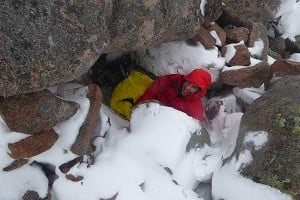
A new video released by The Climbing Academy (TCA) Glasgow highlights a worrying trend in indoor climbing accidents: people are forgetting to clip into the auto belay tape and are effectively soloing auto belay lines. The more fortunate have realised their mistake and downclimbed, while others have miraculously been spared of serious consequences by a low fall. In a few cases globally, people have fallen to their deaths.
When discussing this issue, some climbers respond with disbelief that such an apparently obvious error - especially when the auto belay tapes and triangles often obstruct routes - could go unnoticed by the climbers involved. This 'it-would-never-happen-to-me' attitude overlooks the role that distraction and/or blinkered focus can play in affecting our decision-making and awareness in certain situations - whatever our level of experience.
Auto belays are often used alone and for endurance purposes, which means that lapping routes is a common activity. This repetition, when combined with fatigue, can result in climbers functioning in 'autopilot' mode.
TCA interviewed Sam, an experienced climber who recently took a fall from an auto belay after not clipping-in at The Prop Store in Maryhill. TCA told UKC:
'We are aware that falls do happen and we know that many operators are concerned by this. The Climbing Academy therefore thought it was important to bring this issue to the fore by talking to Sam and sharing her story. Our hope is that this will act as a tangible reminder to all climbers, whether brand new or highly experienced, to try to climb in a more mindful and safe manner.'
Sam started climbing 15 years ago with her daughter. She had been climbing constantly on the auto belay lines for around an hour on the day of her accident. It was a very busy day, she had a lot on her mind, but didn't think that would impact on her climbing. As she started to feel tired and was preparing to leave, she saw another climber complete a move that had previously eluded her. Her husband had stepped away to get a drink of water, so, on her own, she headed back. 'Without thinking, I headed towards the wall. I was absolutely focused on that move. I started to climb, without clipping in.' Having successfully made the move, Sam slipped on another hold around 15-20 feet off the ground and landed on her back, winded and shaken. She counts herself lucky not to have made it to the top.
Listen to Sam's account of her accident in the video below.
Minimising the Risk, and Raising Awareness
Even though full liability was admitted by the climber in the case of Sam's auto belay accident, TCA reviewed and changed the following:
- Location of auto belays - staff ensured they are distinct from other lines and - where possible - visible from the main area
- Size and location of safety triangles were altered - larger triangles now cover starting footholds
- Additional safety signs with fresh designs reminding climbers to clip were erected
- Route setters were advised to keep initial footholds behind the triangles
- Writing and sharing safety content on their website, e-news and social (including this article) was planned
Helen Cassidy of TCA told UKC:
'We plan to introduce even more measures over time that will – along with this video – remind climbers that they have to focus on what they are doing and take responsibility. We encourage all users to look out for one another and ask them not to be afraid to let other customers know there is an issue. We advise solo climbers to take extra care and time. As with all procedures in our centres, TCA will closely monitor auto belay usage and adapt further if necessary.'
- SKILLS: Top Tips for Learning to Sport Climb Outdoors 22 Apr
- INTERVIEW: Albert Ok - The Speed Climbing Coach with a Global Athlete Team 17 Apr
- SKILLS: Top 10 Tips for Making the Move from Indoor to Outdoor Bouldering 24 Jan
- ARTICLE: International Mountain Day 2023 - Mountains & Climate Science at COP28 11 Dec, 2023
- ARTICLE: Did Downclimbing Apes help Evolve our Ultra-Mobile Human Arms? 5 Dec, 2023
- ARTICLE: Dàna - Scotland's Wild Places: Scottish Climbing on the BBC 10 Nov, 2023
- INTERVIEW: Loki's Mischief: Leo Houlding on his Return to Mount Asgard 23 Oct, 2023
- INTERVIEW: BMC CEO Paul Davies on GB Climbing 24 Aug, 2023
- ARTICLE: Paris 2024 Olympic Games: Sport Climbing Qualification and Scoring Explainer 26 Jul, 2023
- INTERVIEW: Malcolm Bass on Life after Stroke 8 Jun, 2023



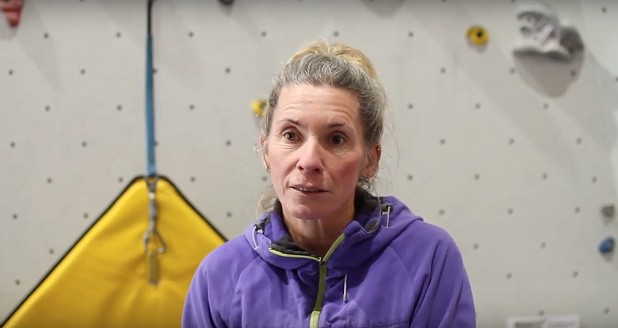

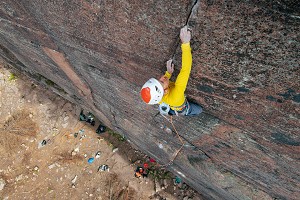
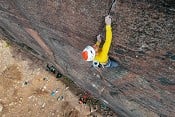
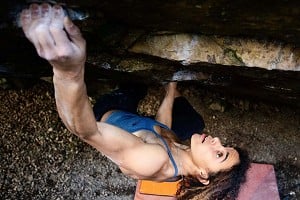
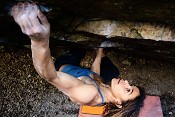








Comments
Solution - connect the autobelay to ultrasonic movement detectors in the wall at 10 feet. If the detectors go off without the autobelay taking in, generate a warning. Install a second set of detectors at 15 feet which electrify the holds instead of generating a warning :-).
Maybe some other solutions to preventing this could be:
a) increasing the size of the triangle barrier to cover more of the wall and make it harder to climb without having first clipped in.
b) set the routes so that all the starting holds (feet particularly) begin in a line behind the triangle barrier and then spread out a bit higher, again making it difficult enough to start climbing that people will remove the barrier and (hopefully) clip in while doing so.
The latter has the benefit of no additional cost other than maybe messing up the flow of routes.
Ollie
Yes, I too vote for that sort of measure, which would be technical possible and desirable – well, not sure about the electifying bit but an alarm that does not rely on sound solely is desirable.
Those are both mentioned in the article as steps TCA are planning or have already taken.
Illuminated "Don't climb" sign on the wall until clip detected ?